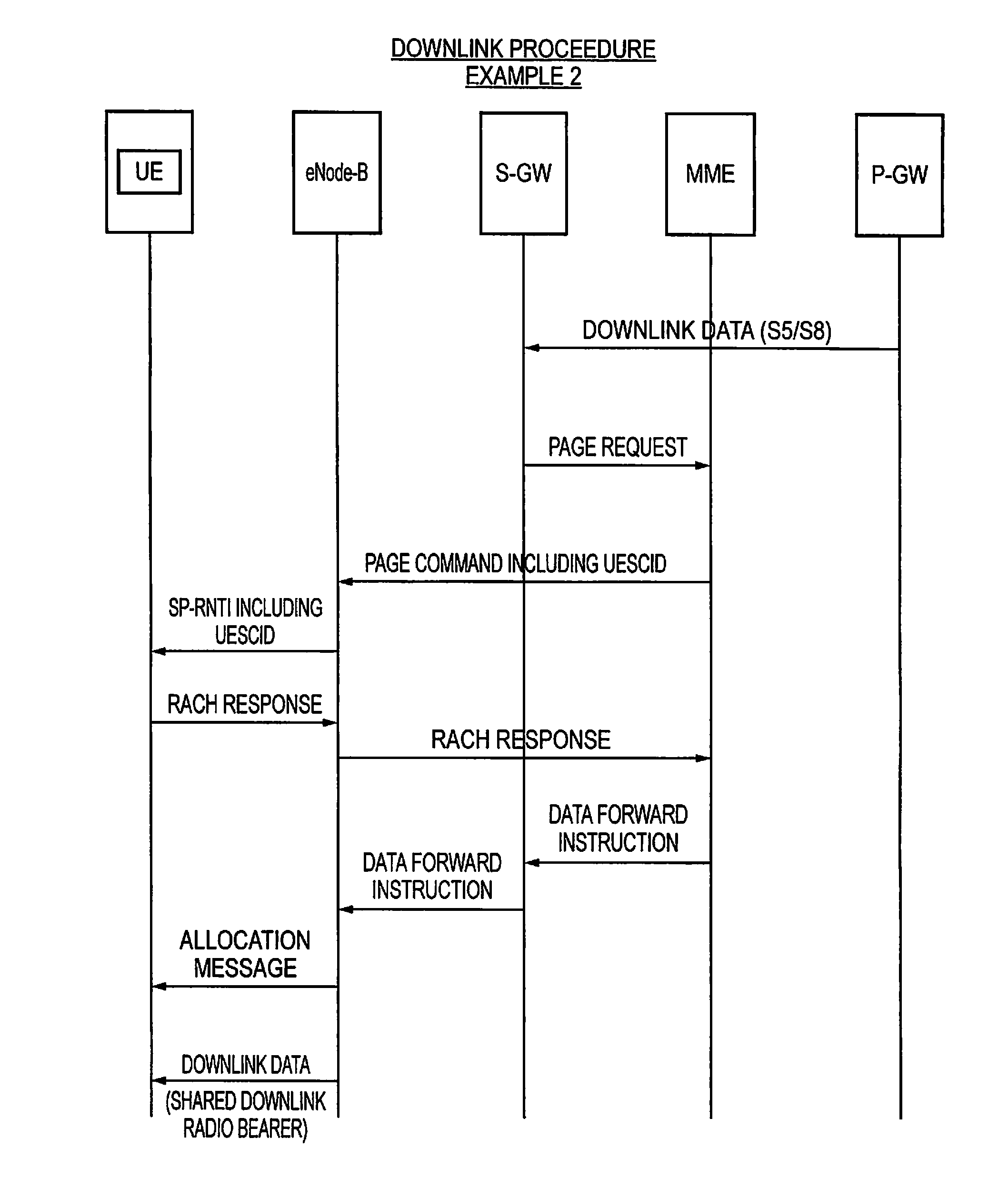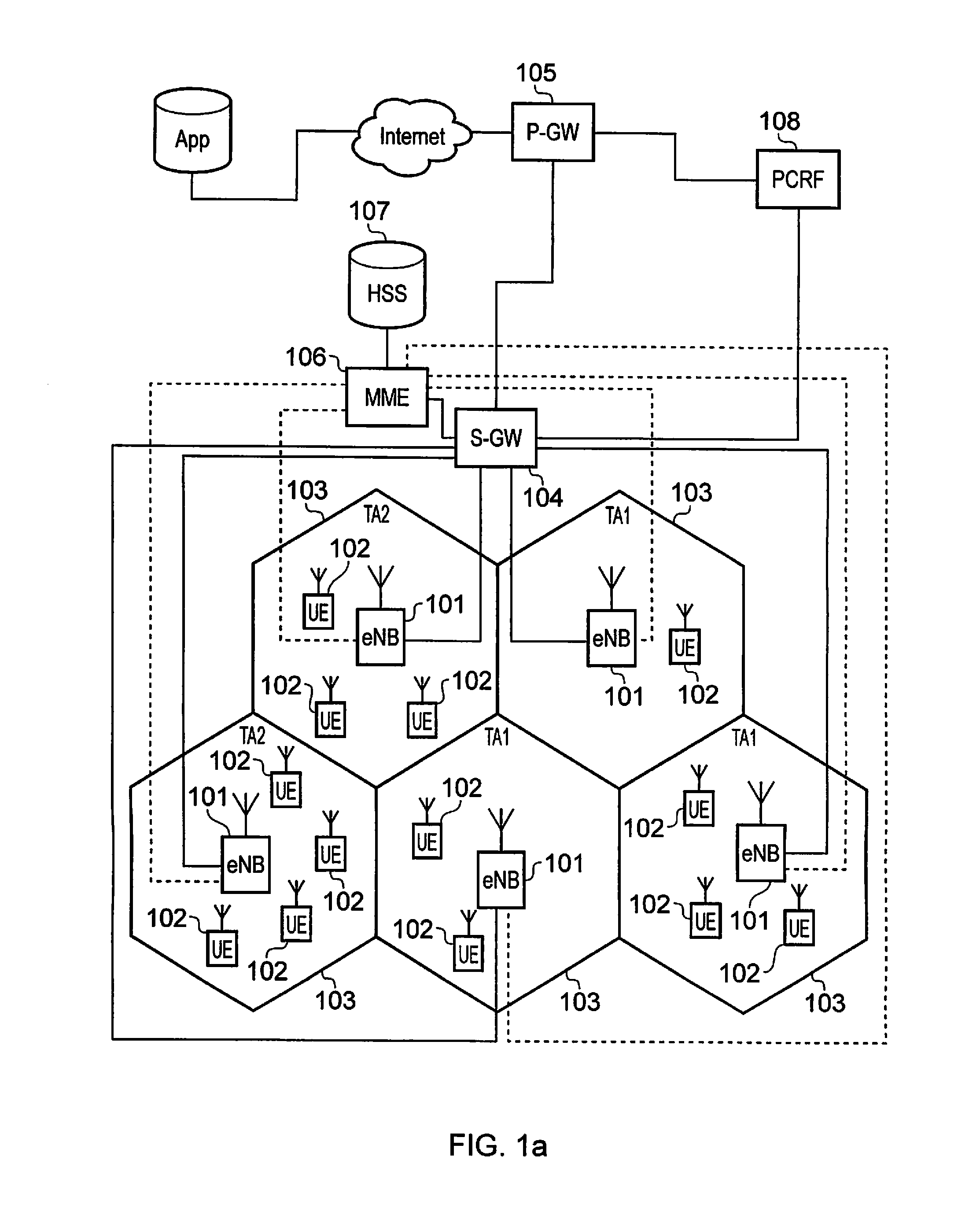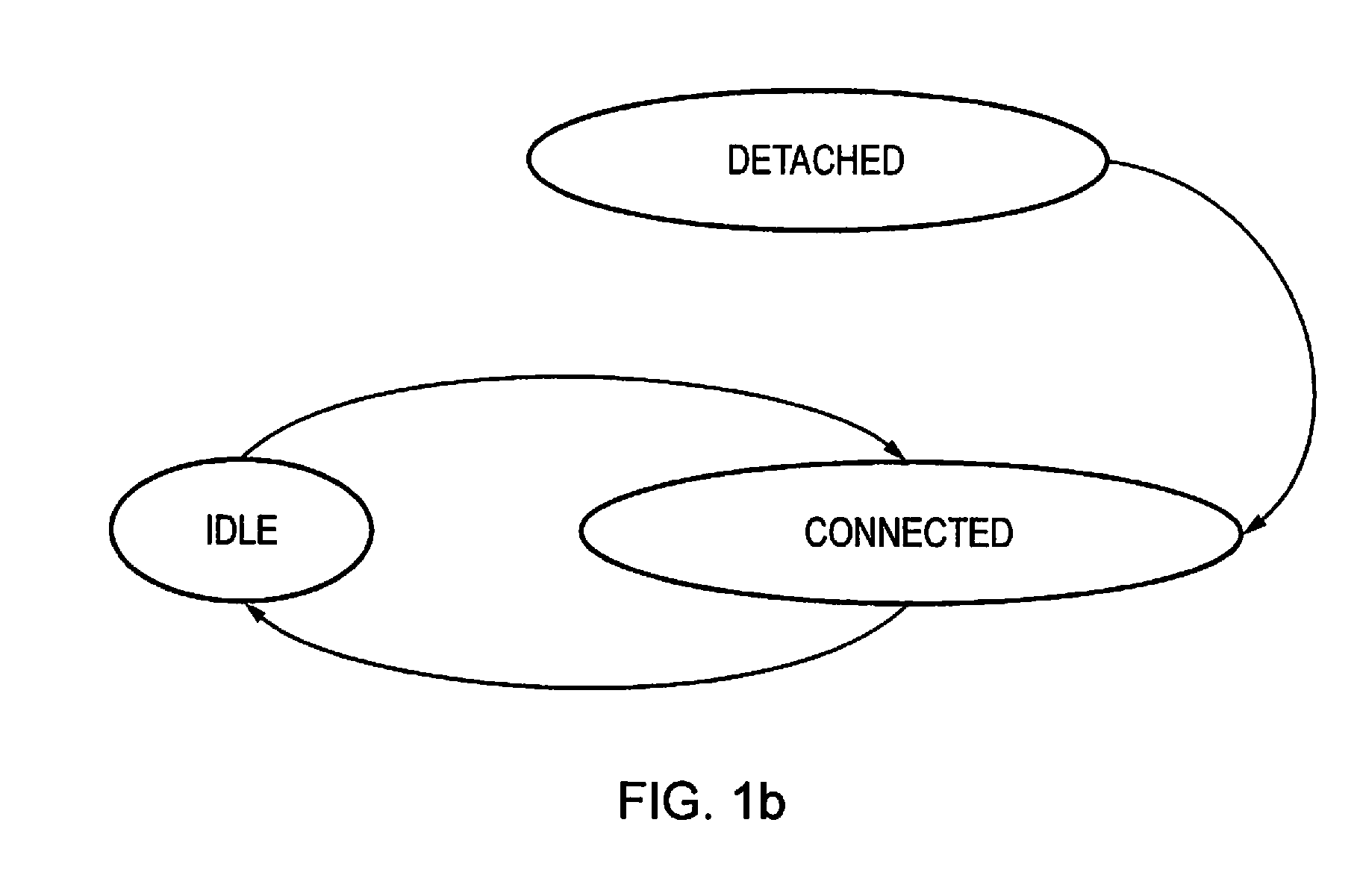Managing operating parameters for communication bearers in a wireless network
a wireless network and operating parameters technology, applied in the field of mobile communication networks, can solve the problems of consuming resources in the network, disproportionately consuming network resources, and inefficient use of network and radio resources
- Summary
- Abstract
- Description
- Claims
- Application Information
AI Technical Summary
Benefits of technology
Problems solved by technology
Method used
Image
Examples
example 1
[0063]FIG. 7 provides a schematic diagram illustrating a downlink data transmission procedure in accordance with examples of the present technique. As shown in FIG. 7, when the S-GW receives from the P-GW downlink small packet data to transmit to a recipient mobile communication device, the S-GW sends a paging request to the MME.
[0064]The paging request includes an indication of the UESCID which identifies the recipient mobile communication device. As explained above, when a mobile communication device initially registers with the network, the MME allocates the UESCIDs and tracks the location of the mobile communication devices. When the MME receives the paging request from the S-GW, the MME determines the tracking area / tracking areas in which the recipient mobile communication device is located. The MME then sends a paging command to all the eNBs within the identified tracking area. Each of the eNBs then transmits a small packet data paging message. The small packet paging message ...
example 2
[0068]In contrast to conventional LTE downlink data transmission in which each mobile communication device is allocated a dedicated downlink radio bearer, in Example 1 of the shared downlink bearer, all downlink small packet data transmitted within a cell is received and decoded by each mobile communication device (at least to the MAC layer). This is advantageous as it is simple to implement. However, a tracking area typically includes several tens of eNBs, therefore the total number of mobile communication devices in a given tracking area could be quite high, possible exceeding several hundred mobile communication devices. Accordingly, even if each individual mobile communication device only received small packet data on a relatively infrequently, an individual mobile communication device may nevertheless be required to power up to receive and decode downlink data at very frequent intervals. This could lead to excessive power consumption by each mobile communication device. A secon...
PUM
 Login to View More
Login to View More Abstract
Description
Claims
Application Information
 Login to View More
Login to View More - R&D
- Intellectual Property
- Life Sciences
- Materials
- Tech Scout
- Unparalleled Data Quality
- Higher Quality Content
- 60% Fewer Hallucinations
Browse by: Latest US Patents, China's latest patents, Technical Efficacy Thesaurus, Application Domain, Technology Topic, Popular Technical Reports.
© 2025 PatSnap. All rights reserved.Legal|Privacy policy|Modern Slavery Act Transparency Statement|Sitemap|About US| Contact US: help@patsnap.com



